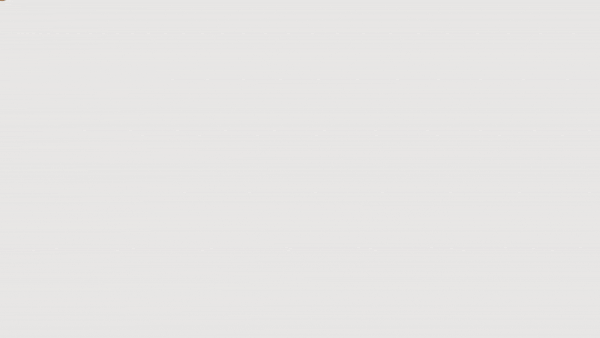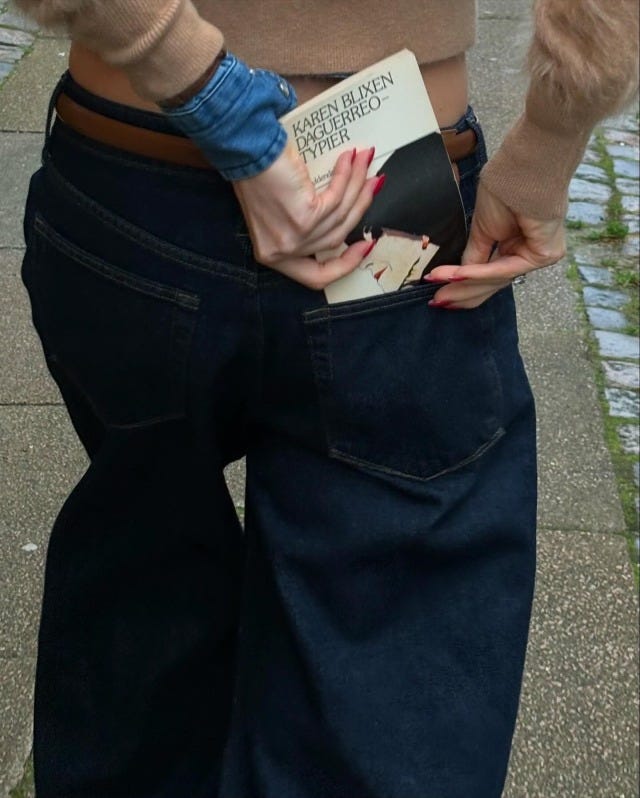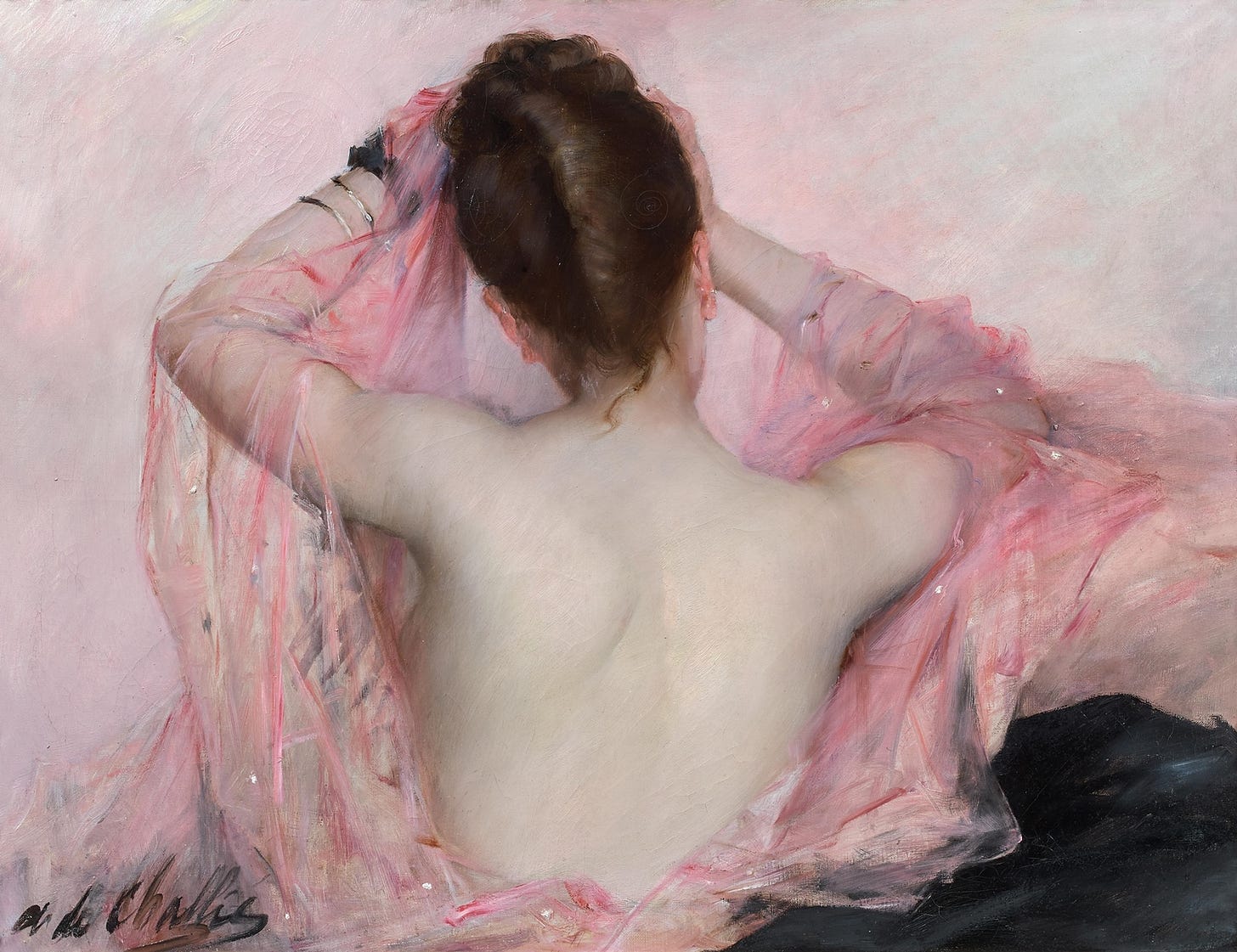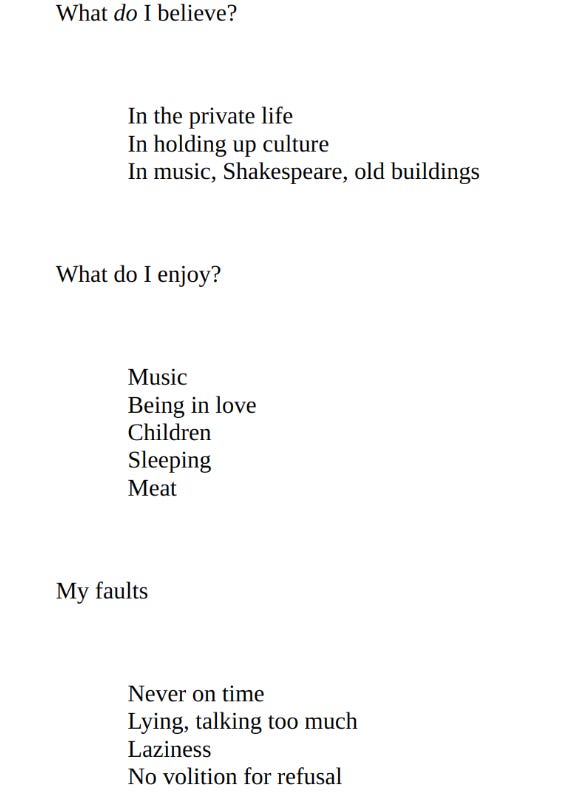The Edit no.1
daguerreotypes, Susan Sontag's lists, illustrated libraries, slouchy bags + more.
Welcome to the first post dedicated to paid subscribers.
I’m excited to curate a new format where I’ll share my top finds from the web — like historical things, movies, or TV series that captivate me, fun facts, stunning paintings, a little bit of fashion, and intriguing articles — plus quotes or lessons from the books I’m currently reading, focusing (mostly) on just one gem from each category to keep things fresh and inspiring!
I tried to create a mood board-style vibe or as if we were on Tumblr, if any of you know how a page is structured there (I think so!).
Vertical scrolling, lots of images, just the right amount of commentary on my part so as not to weigh everything down (at least I hope!), but not too little either which would be unsuitable for this platform and my thematic focus.
My primary focus is on the female perspective and elevating women writers and artists. However, this column will also explore various themes I enjoy, so not everything will be from a female viewpoint.
Without further ado, jump right in and check out my exciting collection of recent finds!
*This post is too lengthy for email, so please read it on the Substack App or in your browser.
1. Daguerreotypes by Karen Blixen.
If a man can devote himself undisturbed to the work which is on his mind, he can, as far I have observed, completely ignore his surroundings - they disappear for him; he can sit in filth and disorder, draught and cold, and be completely happy. For most women it is insufferable to sit in a room if the color scheme displeases them.
Thanks to this picture on Instagram I discovered this book and a new female author, hurrah!
Unfortunately, it is not an easy book to find on the market. I think it is out of print, so it should be searched for in libraries. It is still on the market in Italy, so I guess I will read it in Italian.
That's too bad, because the book's premise really intrigues me, and I want to recommend it. I hope you can find it somewhere, anyway!
Through these daguerreotypes we begin to understand other periods, the renunciations of World War I, the purpose of houses and mansions, of ritual ceremonials, such as tatooing. We are given a fresh and vivid view of the women's movement . . . which urges that what our 'small society' needs beyond human beings who have demonstrated what they can do , is people who are . 'Indeed, our own time,' she wrote in 1953, 'can be said to need a revision from doing to being .' She demonstrated it in her own work and craft, with courage and with dignity. This collection is as real as a gallery of old daguerreotypes, moving and unfaded. (via goodreads)
Also, thanks to the title I found out what daguerrotypes even are!

The daguerreotype process made it possible to capture the image seen inside a camera obscura and preserve it as an object. It was the first practical photographic process and ushered in a new age of pictorial possibility.
The process was invented in 1837 by Louis Jacques Mandé Daguerre (1787–1851).
I find this process so fascinating!
You can watch this video from the Victoria and Albert Museum to see how they are created.
2. “Beauty with pink veil” by Alphonsine de Challié.
Alphonsine de Challié (1858 - 1904) was a French artist. She grew up in a family of intellectuals who cared about artistic education and encouraged her drawing skills.
Alphonsine studied painting with Charles Chaplin in one of the first ateliers reserved for women. She was one of the first female artists to work in a studio notably frequented by Mary Cassatt, Louise Abbéma, and Madeleine Lemaire. True to her master's reputation as an intimate painter, Alphonsine de Challié excels in producing female portraits.
De Challié befriended fellow artist Berthe Morisot and exhibited regularly at the Salon between 1878 and 1882.
3. A journal entry dated 1957 by Susan Sontag.
I'm still reading Reborn by Susan Sontag and I’m always surprised by the gems one can find in this volume.
She wrote down everything, from what she was reading to what she thought of each writer, from her personal experiences, love affairs, doubts, and happy moments, she wrote down quotes, and so much more.
But what caught my attention the most were the lists…
Keep reading with a 7-day free trial
Subscribe to The Literaria Letter to keep reading this post and get 7 days of free access to the full post archives.








